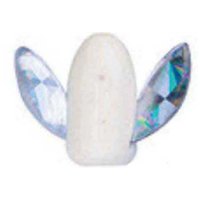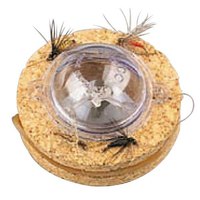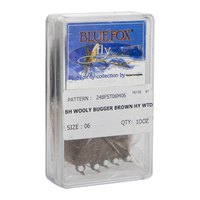Lures Fly
()Sort by
-

Kinetic Put N´ Take 2 Fly
7.99 €
-

Kinetic Put N´ Take 3 Fly
7.99 €
-

Kinetic Coast Flies 2 Fly
10.49 €
-

Kinetic Put N´ Take 1 Fly
6.99 €
-

Akami Floating Fly
3.99 €
-

Akami Floating Fly
3.99 €
-

Baetis Barry´s Red Tag Fly
1.99 €
-

Kinetic Wet Double Hook Fly
11.99 €
-

Kinetic Coast Flies 3 Fly
7.99 €
-

Kinetic Coast Flies 1 Fly
10.49 €
-

Kinetic Coast Flies 4 Fly
8.99 €
-

Kinetic Nympf 1 Fly
8.99 €
-

Kinetic Dry 2 Fly
6.99 €
-

VMC Moontail Jig Fly 10.5g
8 €
-

VMC Moontail Jig Fly 10.5g
8.49 €
-

VMC Moontail Jig Fly 3.5g
8.99 €
-

Baetis Drowned Fly
1.99 €
-

Baetis Drowned Fly
1.99 €
-

Baetis Drowned Fly
1.99 €
-

Baetis Dragon Blob
1.49 €
-

Baetis Finish Case Caddis Fly
1.99 €
-

Baetis Intermediate Snake Blob
5.99 €
-

Baetis Perdigón Nymph
5.99 €
-

Baetis Drowned Cholin Fly
1.99 €
-

Baetis Surface Cholin Fly
1.99 €
-

Baetis Boobie Yellow Eyed Fly
1.99 €
-

Baetis Foam Fly
1.99 €
-

Baetis Heavy Hothead Snake Blob
5.99 €
-

Baetis Drowned Cholin Fly
1.99 €
-

Baetis Surface Cholin Fly
1.99 €
-

Shakespeare Sigma Classic Still Fly
8.99 €
-

Kali Fly Set 1
5.99 €
-

Kali Fly Set 2
6 €
-

Kinetic Wet 2 Fly
8.99 €
-

Kinetic Dry 1 Fly
6.99 €
-

Baetis Drowned Fly
1.99 €
-

Baetis Jelly Blob Blob
5.99 €
-

Baetis Jelly Bunny Blob
4.99 €
-

Baetis Daphnia Blob
5.99 €
-

Baetis Daphnia Blob
4.99 €
-

Baetis Hare Lug &Part Fly
1.99 €
-

Baetis Hyddropsche Fly
1.99 €
-

Baetis Intermediate Snake Blob
5.99 €
-

Baetis Mole Cul Fly
1.99 €
-

Baetis Munro Killer Fly
4.99 €
-

Baetis Balloon Fly
1.99 €
-

Baetis Boobie Sr Cocktail Sparkler Fly
1.99 €
-

Baetis Crystal Bristol Viva Fly
1.99 €
-

Baetis Bead Body Blob Blob
4.99 €
-

Baetis Heavy Hothead Snake Blob
5.99 €
-

Baetis Intermediate Snake Blob
5.99 €
-

Baetis Jelly Bunny Blob
4.99 €
-

Baetis Dry Fr Vila Fly
8.99 €
-

Baetis Mar Blob
3.99 €
-

Baetis Mini Booby Blob
2.49 €
-

Baetis Pheasant Tail Fly
1.99 €
-

Baetis Ryacophila Larva Fly
1.99 €
-

Baetis SR Fly
1.99 €
-

Baetis Drowned Cholin Fly
1.99 €
-

Baetis Drowned Cholin Fly
1.99 €
-

Baetis Quevedo Fly
8.99 €
-

Baetis Nacho Heredero Asura Minnow Fly
14.99 €
-

Baetis Baron Fly
8.99 €
-

Baetis Boobie Cactus Cat Fly
1.99 €
-

Baetis Drowned Ring Fly
4.99 €
-

Baetis Boobie Cactus Orante Fly
1.99 €
-

Shakespeare Sigma Stillwater Fly
7.99 €
-

Shakespeare Sigma Classic Wets Fly
8.99 €
-

Blue Fox Wolly Bugger Flash Tail 6 Fly
14.49 €
-

Blue Fox Wolly Bugger Metal Head 6 Fly
15.99 €
-

Blue Fox Golden Head Nymph Fly
18.49 €
-

Blue Fox Golden Head Nymph Fly
16.99 €
-

Blue Fox ELK Deer Caddis 14 Fly
15.99 €
-

Blue Fox ELK Deer Caddis 14 Fly
15.99 €
-

Blue Fox Wolly Bugger Flash Tail 6 Fly
14.49 €
-

Blue Fox Caddis Mangy 16 Fly
15.99 €
-

Kinetic Wet 1 Fly
8.99 €
-

Akami Floating Fly
3.99 €
-

Akami Floating Fly
2.99 €
-

Akami Floating Fly
3.99 €
-

Akami Floating Fly
3.99 €
-

Asari Flashing Pro Fly 2/0
2.99 €
-

Asari Flashing Rigs Fly
2.99 €
-

VMC Moontail Jig Fly 7g
8.99 €
-

VMC Moontail Jig Fly 3.5g
6.99 €
-

VMC Moontail Jig Fly 7g
7.99 €
-

Baetis Nacho Heredero Fly
11.49 €
-

Baetis Nacho Heredero Fly
11.49 €
-

Baetis Nacho Heredero Fly
11.49 €
-

Baetis Nacho Heredero Fly
12.99 €
-

Baetis Nacho Heredero La Loma Fly
11.49 €
-

Baetis Nacho Heredero La Loma Pin Minnow Fly
12.99 €
-

Baetis Nacho Heredero La Loma Pin Minnow Fly
12.99 €
-

Baetis Nacho Heredero Rabbit Sculpin Fly
11.49 €
-

Baetis Nacho Heredero Weighted Micro B Minnow Fly
12.99 €
-

Baetis Nacho Heredero Weighted Micro B Minnow Fly
11.99 €
How to choose fly fishing lures?
A fly lure is typically made using a combination of natural and synthetic materials. The specific materials used can vary depending on the type of fly being tied and the target fish species. Synthetic materials like nylon, polypropylene, or polyester are used to imitate natural materials and add durability to fly lures. These fibers can be dyed in various colors to create attractive patterns. You can buy these fishing lures from these brands: Akami, Kinetic, Akami, Shakespeare, and Baetis.In fly fishing, artificial lures used are often referred to as "flies." Selecting the right flies for fly fishing involves considering various factors like the type of water, the target species, the time of year, and the behavior of the fish. Here are steps to help you choose fly fishing lures:
Understand the water and fish species:
Research the water you´ll be fishing in rivers, streams, lakes and the species of fish present. Different fish have distinct feeding habits and preferences.
Identify the insects and prey:
Observe the insects and other aquatic life around the water. Try to match your flies to the prevalent insects and natural prey that the fish are feeding on. Common types of flies imitate insects like mayflies, caddisflies, midges, terrestrials, baitfish, or crustaceans.
Consider fly patterns:
Flies come in various patterns and sizes. Dry flies float on the surface and imitate insects like mayflies or grasshoppers. Wet flies sink beneath the surface and mimic subsurface insects, baitfish, or emerging insects. Nymphs imitate immature aquatic insects underwater.
Color and size:
Select fly colors and sizes that closely resemble the natural insects or baitfish in the area. In clear water, more natural and realistic colors might be effective. In murky water or low light conditions, brighter or contrasting colors can attract attention.
Match the hatch:
Pay attention to the hatching patterns of insects in the water. Matching the hatch involves using flies that mimic the size, color, and behavior of the insects currently present.
Retrieve and presentation:
Consider how the fly will be presented to the fish. Different retrieves fast, slow, twitching can mimic the movement of prey. Match your fly to the fish´s behavior and feeding patterns.
Experiment and adapt:
Keep a variety of flies in your tackle box and be willing to experiment with different patterns, sizes, and colors. Sometimes, fish can be picky, so having options can be beneficial.
Remember, successful fly fishing often involves trial and error. Observing the water, understanding the fish´s behavior, and having a diverse selection of flies can increase your chances of enticing the fish to strike.

























